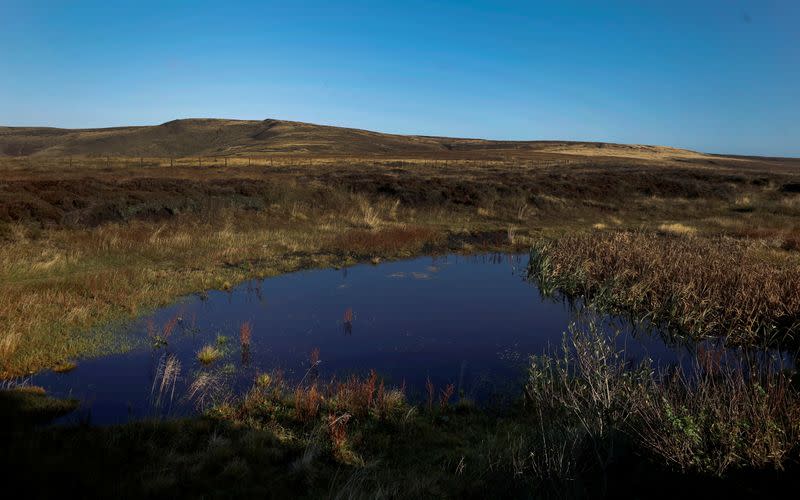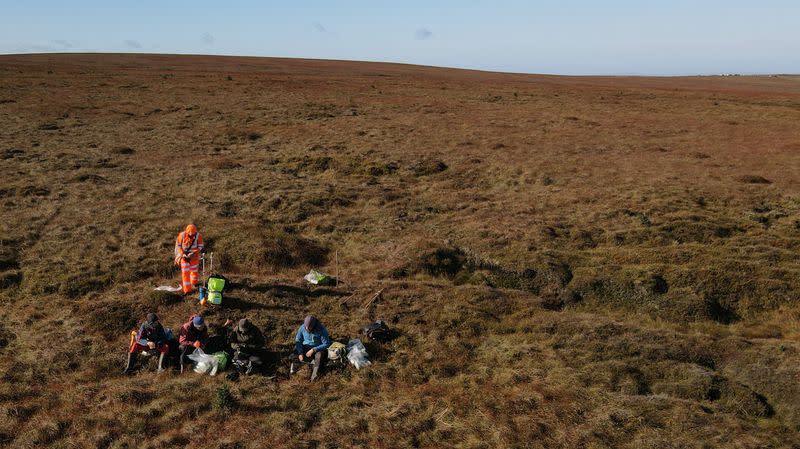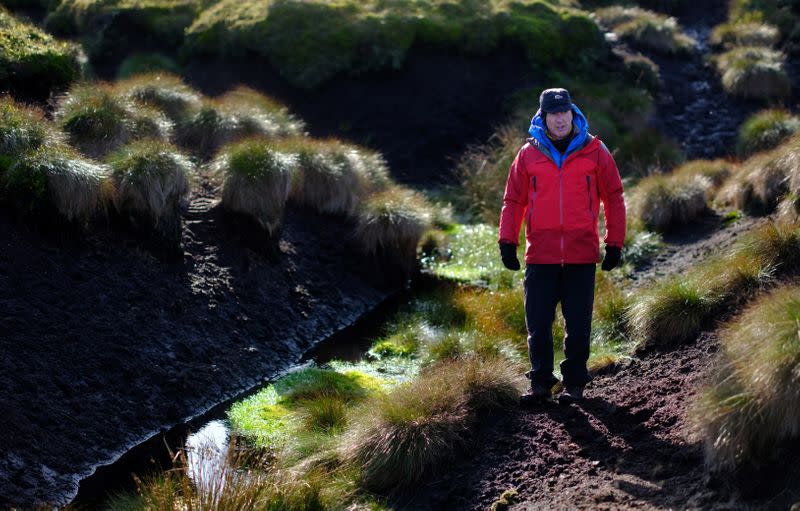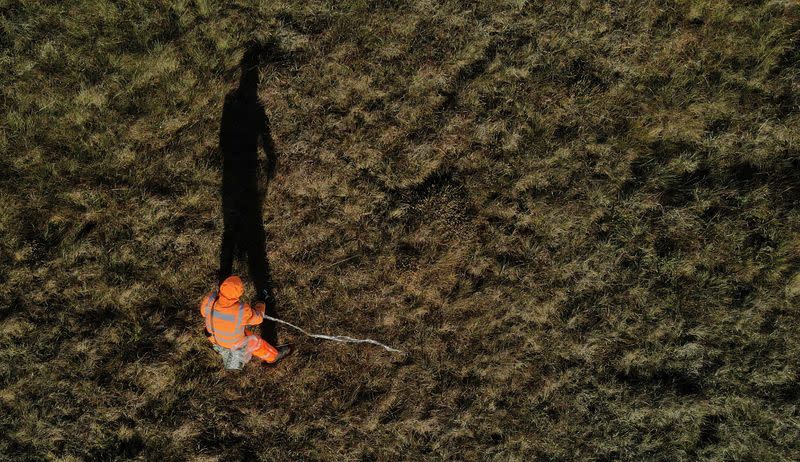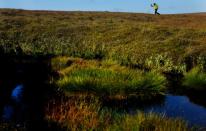Peat protection key for UK conservationists tackling climate change
By Lucy Marks and Natalie Thomas
PEAK DISTRICT, England (Reuters) - For conservationist Christopher Dean, protecting the peatlands of northern England is as important as halting the excavation and burning of coal in the struggle against global warming.
Peatlands take CO2 out of the atmosphere as the vegetation on top builds plant structures and the carbon settles into the layers of peat that have developed over thousands of years.
But peatlands, the largest carbon sinks on land in Britain, are at risk due to climate change and ecological destruction, said Dean, head of the Moors for Future Partnership which covers the Peak District, South Pennines and West Pennine moors.
"Keeping this in the ground here is as important as not mining coal and putting coal back into the atmosphere," said Dean, as he held up some loose peat.
In Britain, as elsewhere, hotter, drier springs and summers are drying out peatlands, leaving them susceptible to wildfires. When fires burn them, carbon dioxide is released back into the atmosphere, reversing the environmental benefits.
Dean's team are constructing small dams in natural gullies to stop the moorland they oversee eroding and to keep it moist. Planting sphagnum moss, which can hold 20 times its own weight in water, also keeps the peat wet and encourages carbon capture.
With the world's leaders due to meet in Glasgow, Scotland, to try to strengthen action against global warming, Dean is confident that protecting peat could be one of the easier wins.
"Lock it up in the peat and it will be a fantastic good news story for climate change. And it's something that we could do very quickly," he said.
FARMING INCOME
"We could make that happen in a few years, whereas most of the other issues that we've got in climate change, it will take decades for us to resolve those issues."
In England's marshy Fenlands, a pilot project is testing new types of sustainable crops that can grow in re-wetted peatlands and have potential uses in food, industry and medicine.
The Wildlife Trust has been working on the "Water Works" project with scientists and academics from the UK Centre for Ecology and Hydrology and from the University of East London.
"What we're trying to do here is demonstrate a new way that we could form peat soils and still bringing economic income for farmers, but actually trap that carbon in the soil with a new form of crops," project manager Lorna Parker said.
Examples of the plants are typha, sphagnum moss and reeds. The team hopes the reed crop could eventually be dried and harvested and used for cavity wall insulation. Typha could also be used in homes.
"When you think it's meant to be hundreds of thousands of new homes built in the UK in the next 30 years, wouldn't it be great if they could be insulated with typha board," said project manager Kate Carver, who works with Parker.
(Reporting by Lucy Marks and Nathalie Thomas; Editing by Alison Williams, William Maclean)

 Yahoo Finance
Yahoo Finance 